I graduated from University in 1997 as a primary school teacher and headed straight for the worst area in London to teach for 2 years. (listen to that story on our podcast)
Since then I’ve mostly taught children that have come from disadvantaged circumstances in North Carolina, Dublin, and Bangkok.
Except for my two years teaching on the North Shore of Sydney, where I taught children such as the son of the head of Sony Music Australia, and the son of the Director of AMP. That was pretty bliss (although not without issues.)
I thought I’d be right on top of teaching my own child on this great Australian road trip. Hmmm.
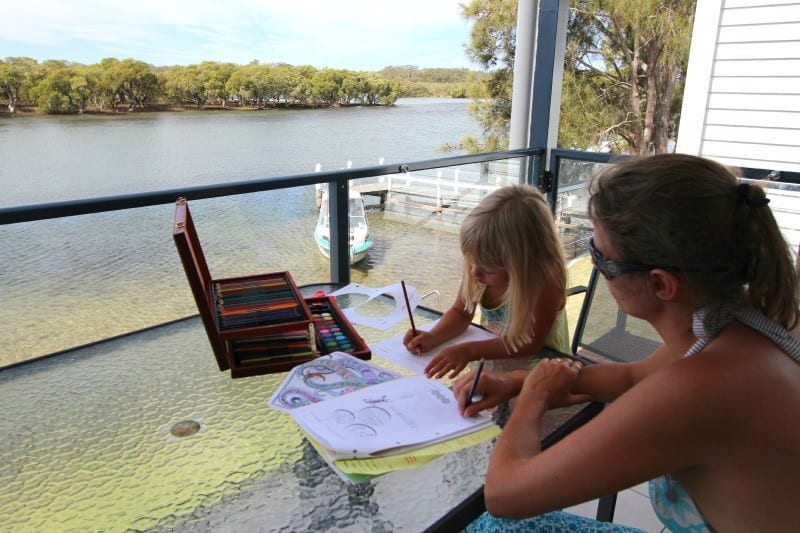
I’ve heard it said many times, you can’t teach your own kids. It’s a completely different experience. Yep. Give me a class of 30 challenging kids any day. (Well maybe not really!)
We’re starting to find our groove and when it flows right, I do really love teaching my own child.
Read more: My teaching experiences overseas
We’ll be regularly sharing our experience for the next 12 months, but for now, here are a few tips.
UPDATE: I’ve now been homeschooling for seven years. This post focuses mostly on homeschooling and distance education in Australia. If you are form the US, you will like this post on roadschooling in the US. Tips int ehre as well from any one in the world looking to homeschool – it’s quite universal. And we just finished this podcast on homeschooling)
Homeschooling vs. Distance Education
When you travel with your kids, you have two homeschooling options (well at least in Australia). There are a lot of factors to consider and it all depends on your personal circumstances and preferences. There is no right or wrong way.
What is homeschooling?
Homeschooling is when the responsibility for learning is placed upon the parents. Parents have to make sure they are checking off objectives and outcomes for their child’s stage of learning.
You have to plan, implement, and evaluate and then report that to the authorities. I don’t know much beyond that, but you can check out more information here.
What is distance education?
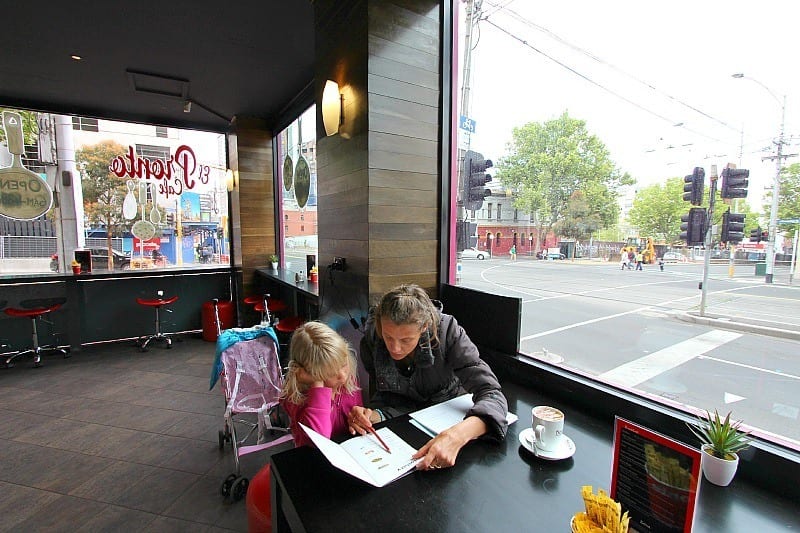
There are many children in Australia who live in remote areas, miles from the nearest school. Distance Education, or School of the Air as it was once known, was created to cater to their schooling needs.
Lessons were sent by mail and teachers teach the students over radio. These schools still operate, and if you are traveling, this is, by law, your only option. We considered homeschooling, but couldn’t because we would not have a permanent residence.
For distance education, you enroll in a school (our school is Sydney Distance Education – SDEPS) and they send you two weeks worth of lessons at a time, with all required resources.
There are instructions and marking guides, so we just implement (my dream teaching job). Everything is aligned to the traditional schooling curriculum and students are assigned a teacher. They correspond with the teacher via Skype, phone or email. We also connect with Kalyra’s class and teacher through an online community portal.
Why we chose, and like, distance education
- We had no choice, it’s the law because of our traveling circumstances. I’m guessing you could work around these laws, but we did not want to take the risk. The last thing we want is the hassle of dealing with the government and the law.
- I’m not a great supporter of the education system, but I do believe in a certain structure to learning. The curriculum in the essential areas like reading and maths, sometimes science, is pretty on-point. We certainly won’t be homeschooling forever and I don’t want Kalyra to fall behind. Distance-ed ensures she’s checking off the boxes.
- I need accountability. It’s hard enough for me to stay on task with the schooling work as it is with distance education. It would be far too easy for me to put off the focused learning activities to just let the kids play and explore freely. This does have very positive points, but there needs to be a balance and I don’t think it’s fair for my laziness and non-chalance to interrupt my child’s learning. Other parents may be more disciplined than me.
- I’ve spent 15 years researching, planning and preparing for lessons covering all subjects. I left teaching because I hated it and I was tired. I can’t bear the thought of having this responsibility for my own child. My patience for teaching her is already really thin, just because of the previous life I lived. I LOVE that someone else has created all the units of work and I just get to do what I love – facilitate learning.
- I don’t have time to be a homeschooling parent. It takes a lot of time to plan activities that align with the curriculum. Plus, you have to find the materials and ensure that its curriculum and individual needs aligned. Just give it to me. Tell me what I have to do, give me the materials and let me do it.
- With distance education, Kalyra still gets to have a teacher and feel like she’s involved in a classroom. Just yesterday we were in her virtual classroom learning about classmates in Poland and others traveling around Australia like she is. Kalyra loved school so this is as close as we can get to giving her a small ownership in it.
The GOOD of distance education
Some of these are positives of homeschooling too.
- The structure (positive parts of it) of traditional learning is still present.
- I know she is checking off all curriculum boxes and won’t fall behind.
- There’s a lot of flexibility with how we organize our day.
- There’s so much room for life learning.
- It’s far more targeted to her needs.
- One-on-one teaching means it takes 1/5 of the time to complete a lesson.
- They supply you with all the lessons and materials. It’s super easy to implement. Kalyra gets cool videos and audios to listen to with supported examples of what she’s learning or teacher direction.
- We can work around her energy levels and moods. If we see she is too tired or her mental space is not conducive to learning we just put it away and come back at a better time. You can never do that in a classroom. What’s the point if their beautiful brains just aren’t open to receiving at that time?
The BAD of distance education
- It’s still about checking off boxes and much of the learning is irrelevant. I get immensely frustrated when I HAVE to do a lesson with Kalyra, despite knowing how pointless it is. I get frustrated with the education system for wasting my daughter’s time filling her head with cloud labels like cumulonimbus and altostratus instead of teaching her to use her five senses to know when rain is coming, how to make a decision, how to get along with others, how to manage money, find peace within herself so she can manage uncertainty. You get my drift and you can see where this rant is going!
- I’ve not experienced homeschooling, but they say there is more work for the child to do with distance education. I’m not sure. I think there is possibly less for the parents, but it depends how focused you intend to be with your kids for homeschooling. I don’t think it takes up to much time and you have that comfort of knowing their educational needs are looked after.
- This is a little more pressure in making sure things are done and sent in on time. You have to be more vigilant.
- This is actually also a good one, depends on how you look at it. There is no space for your child to not finish tasks. This might seem a little crazy, but the expectation is a little higher in distance education. In the traditional classroom, due to time constraints, it’s challenging to get every child to finish every activity. This can lead to all sorts of consequences like extra homework, or missing out on play time to finish it. OR, it can be just left undone. Kalyra is actually doing more than most children in school because I ensure every activity is finished. This is a huge plus for her as it means she really is checking off all the boxes, but at the same time she has no space for rest or even sick days. Everyone needs a good sick day, right? (Homeschooling parents do at least!)
How we approach home schooling and distance education

- We’re very flexible in how we approach distance education. They say you should be doing 4 hours a day, 5 days a week. We usually do 1-2 hours every day so we can allow for exploration days (where the best learning happens).
- If I think the activity is just a checking-off-box waste of time, we’ll just check off the box. (shh don’t tell her teacher!!) No we truly do most things.
- We try to do maths and reading in the morning for 1-2 hours and then incorporate the other key learning areas into our day the best we can.
- Kalyra is super smart and quite advanced so we can move through the work at a quicker pace. She usually finishes the 2 weeks of work before the time is up. I move straight into the next 2 weeks so we can add in more flexibility should we get a busy day or two ahead.
8 challenges of distance education
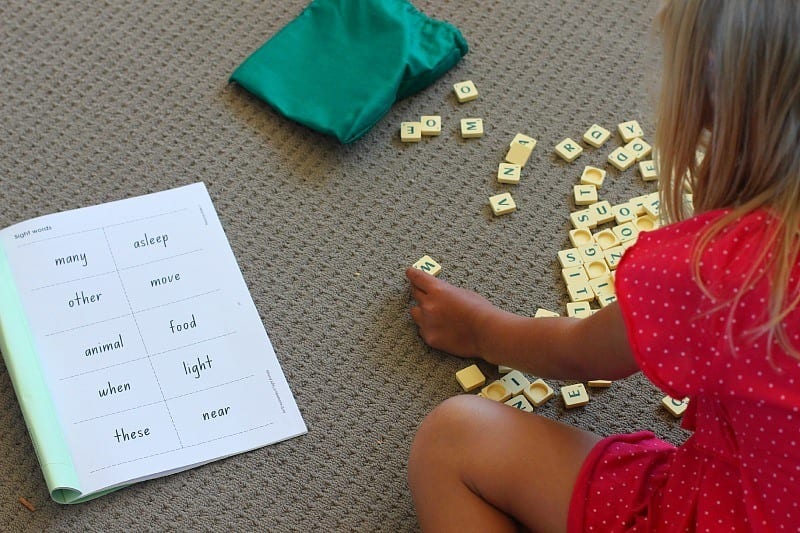
- You do have to be accountable, so as much as you want to just ride your bike and go exploring each day, you can’t. You have to schedule distance education in. It’s the best thing for your child so, no matter how tired you are, you’ve got to do it. This means saying no to many activities you might want to do.
- Teaching takes up a lot of your mental energy. I’m ready to send her back to school most days because I can’t be bothered. (I do deal with a lot of ex-teacher exhaustion syndrome – hands up if you know what I’m talking about?!)
- There’s no principal to send her to when you have no strength left.
- Kalyra knows she has a lot more freedom and flexibility so will manipulate and push buttons.
- Teaching your children presents them in a different light to you. Sometimes that ain’t pretty. I don’t like being privy to that information-she’s my angel remember! LOL. It just presents a new dimension to parenting that you otherwise wouldn’t have had to deal with.
- Teaching your children sometimes presents yourself in a different light that you don’t like! I’m certainly aware of a few more of my character traits that need improving. Patience and compassion are two of them.
- She’s not in a regular classroom with her friends. There’s not much we can do about this, but it bothers us, and her.
- I know Kalyra wouldn’t dare act defiant and unruly with her classroom teacher, but she does with me. This is difficult, often heartbreaking, and can add a strain to family life.
12 Tips for distance education on a road trip
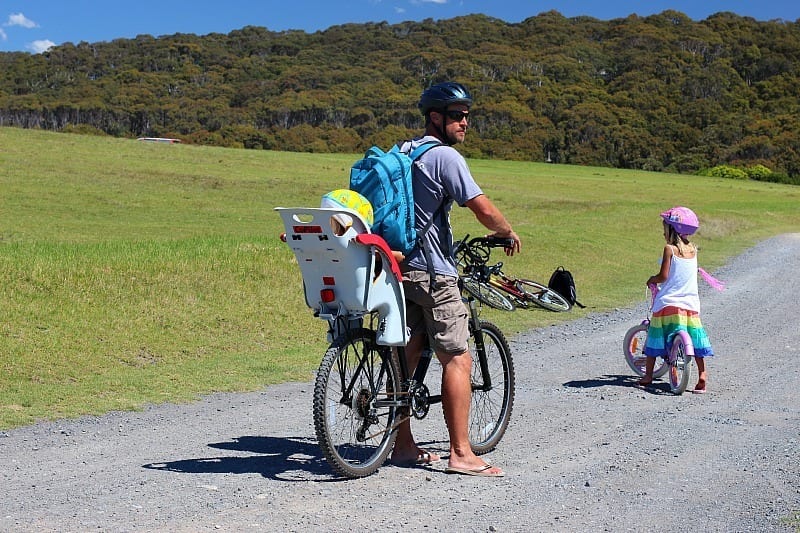
- The most essential thing is that children are absorbing the world around them, following their curiosities, asking questions and learning from everyday experiences. Traveling checks off all of these boxes. As long as you are incorporating this into your daily life, your child will be fine.
- Reading is essential. You need to schedule this in daily. Put traveling with kids aside, every parent needs to read with their child every single night from the day they are born. Trust me, it’s the biggest educational gift you can give them.
- Pull learning into all your experiences. We get our daily dose of PE with bike rides, long walks and kicking the ball around. We investigate rock pools, visit interactive historical sites like Port Arthur, the Female Factory and Sarah Island. Kalyra knows far more about convict history from visiting these places then she ever would at school. We learn how to appreciate art at places like MONA, interact and enjoy plays, and have first hand animal experiences like the penguin parade at Phillip Island. We practice maths language and skills with everyday activities and encourage Kalyra to read all the signs etc that we see out and about.
- Follow their passions. Kalyra has a flair for fashion. She’s been advising me on outfits since she was two. We brought her a barbie fashion designer book. She creates her own outfits. It’s a fun passion activity for her and helps her to think about line, size, shape, colour and texture. She’s also developing higher order thinking skills of analyzing, and evaluating. We also bought both girls a guitar. Kalyra is now writing her own songs and fills the campsite with relaxing music of an evening.
- As long as you target the very specific key learning areas and skills essential for a child’s ability to participate effectively in society, then don’t worry too much about the other pointless tasks. Just check off the boxes.
- Allow ample opportunities for your children to practice talking and listening. Just this week, Kalyra has been practicing ordering and paying for things herself. Her confidence is growing and I am ordered to stand way back while she takes care of it. (I think it’s just because she wants to pocket the change. She thinks the whole exchange is so magical because she buys something yet gets money back. I don’t want to shatter the mystique for her yet by explaining she’s actually getting less back.)
- It’s not what your children learn and memorize, it’s about how they learn. Teach them how to think for themselves, how to solve problems, how to investigate and follow their passions and curiosities. Teach them how to use their manners, respect others, be kind and make effective decisions.
- Most essential learnings should be done in the morning when the brain is most alert i.e reading and maths
- Break the learning up. 30-40mins focused task, followed by a break.
- Make it a joint parent teaching effort. Kalyra likes to have Craig teach her as well so we share the duties. And when it gets too much for me, I pass it over to Craig to take care of.
- Give them benchmarks to work towards. I can’t believe I have to put a behaviour plan in place for my own child, but I’ve given in to the fact that it’s best if I do. Kalyra really is an achiever – part of our butting heads, is that she doesn’t like any kind of feedback as she likes to do it herself or wants it to be perfect. It’s so difficult to manage and help her to understand that mistakes are a part of learning and its just part of the process of improving. So benchmarks – work through with your child what they need to work towards and set stepping stone goals. Come up with an evaluation system after they’ve finished each task. Ask them to grade themselves and you share your thoughts and why. Kalyra got a B- the other day. I explained that the B meant she did really good, but has room for improvement. The minus was for the semi-defiant meltdown she had, which she managed to control herself. She was happy with that, felt supported and understood what to do next time. She likes this system as it appeals to her need to achieve and work towards something + take a little bit of ownership.
- Choose reward systems wisely. I’m not overly enthusiastic about extrinsic rewards, as it’s not teaching them to love and work for success inside out. Focus on the good feelings it brings. This is hard to do with kids, but really practice it as it will soon become a normal pattern for them. If need be, have a reward for the entire week’s progress rather than each day. You know your child though, so if a daily reward works better do that. An easy one, is to give stickers for each completed task or benchmark that you set together, and then once x amount of stickers have been collected, they can get X reward (that they helped you create). Please don’t make it sweets. Good work needs to be rewarded with things that are good for you like: extra time with Mum and Dad, a favourite book to read, or a trip to the library (Kalyra loves this).
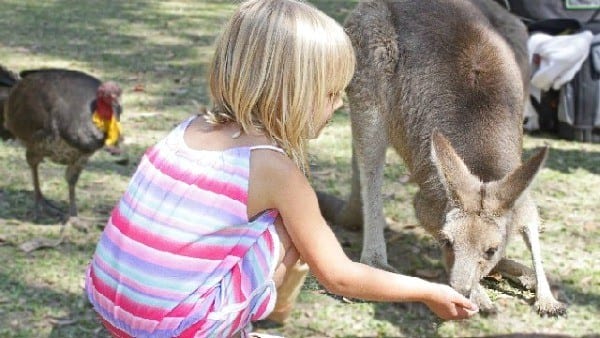
Homeschooling Resources we use

Much of the best learning happens by interacting in the world around us.
Having said that, technology presents amazing opportunities for learning. Kids lap up the games and concepts without realizing they’re learning. I suggest you incorporate games and tech stuff into your every day teaching. Limit it to 20-30 mins a day.
Notes
Just let them write. Kalyra loves opening a new page in S notes and just free writing. She learns a lot about spelling, editing and tech stuff. And it’s hands off for me for the most part.
Reading eggs
Reading Eggs is a fantastic program for teaching reading skills. The program comes with Distance ed – another bonus. I think it’s the bees knees and definitely worth subscribing to. Kalyra learns so much and Savannah often sits with her to listen and sing along to the phonic songs and play the games.
Maths Online
Kalyra’s teacher sets certain tasks to do related to the maths unit of study. Maths Online has short instructional videos with questions. There is also diagnostic testing available within the program.
Study Ladder
We haven’t dived too deeply into Study Ladder yet as we’ve had no time. But it looks good and I’ve heard great things about it.
Read more posts on homeschooling and distance education:
- OMG! you mean you’re taking her out of school?
- Home and Away- the case for homeschooling
- Homeschooling on the road
- Find the animals on the map
- Tips for homeschooling on the road
Pin to share
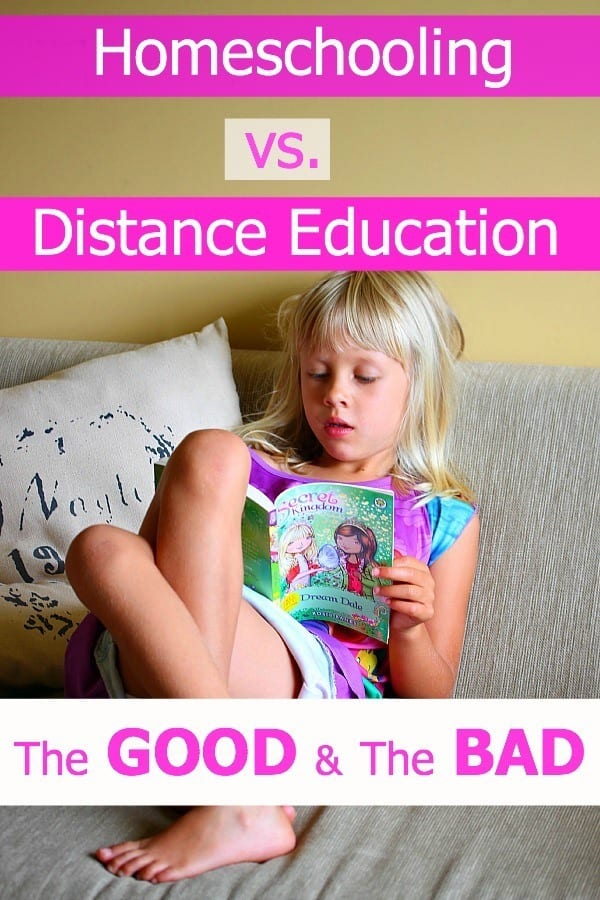
What are your experiences with homeschooling or distance education? Do you have any tips or resources to share?